5 Tips for Creating Quality Customer Service
In theory, the keys to great customer service are simple:
- Sympathy
- Understanding
- Helpfulness
Agree, it doesn't sound that hard. You just need to develop these three skills and you'll be fine. You can achieve this once you master the art of gratitude and learn how to use a conversational tone or the right choice of words to increase the level of service.
In practice, things are a little different, and your expectations may differ significantly from the real state of affairs. There are a lot of conflicting methods that allow you to determine the opinion of customers regarding your support.
Do you want to know what they consider to be a truly high-quality service? Check out 5 amazing studies on this topic.
1. What is the best news to start with? With good or bad?
Probably, you often had to answer such questions. Basically, it's just an old cliché, but it actually has a direct impact on the level of service. The order of presentation you choose can really influence the feelings and actions of your customers.
Researchers at the University of California tested different types of news reporting on a group of subjects and tracked their reactions and behavior in each case.
Scientists have discovered a very curious fact: the participants who received the bad news first were much more receptive to the information, while those who received the bad news last were more prone to take action.
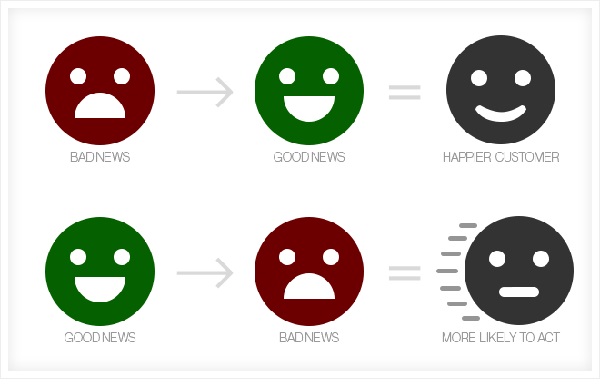
When it comes to customer service, customer satisfaction is the determining factor, so you should start with the bad news. But in order to push the consumer to action, he, first of all, needs to be pleased with a portion of positive information.
2. Quality service is based not only on the speed of service
Thinking logically, it can be assumed that customer satisfaction directly depends on the promptness of the service provided to them, and in most cases this statement is indeed true.
But be that as it may, there are other, underestimated factors that are even more important.
A study conducted by Gallup determined the level of interest of the bank's customers after the service. It turned out that high-speed banking service increases engagement by about 6 times, and various human factors of such service (such as courtesy and willingness to help) increase the likelihood of a client's full interaction with the bank by 9 times.
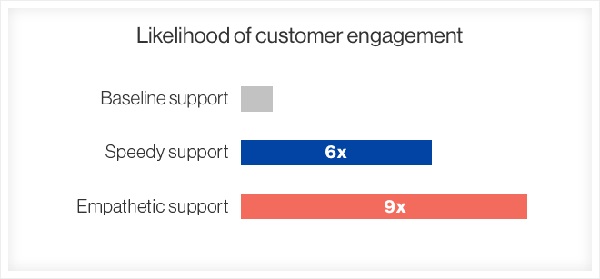
As William J. McEwen says in Married to the brand:
“Speed is just one of many factors and far less important than delivering service in a friendly and competent manner.”
Based on these statements, stop focusing on high work rates and provide your customers with thorough, attentive and friendly service.
Customer expectations that affect their level of loyalty change depending on the interaction method used. Yes, speed is not very important for email, phone consultations or personal service, but in social networks it is the main trump card.
A study by The Social Habbit found that When contacting a brand, 32% of social media users expect to receive a response within 30 minutes, and 42% are willing to wait only 60 minutes.
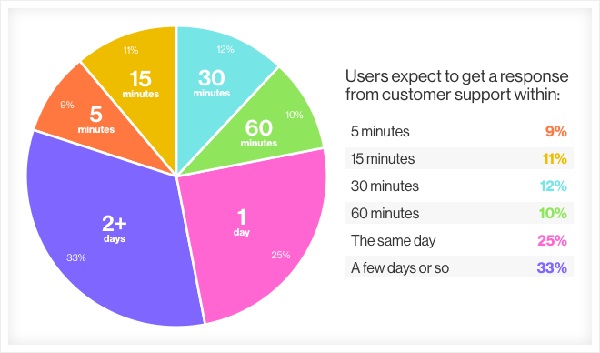
Customers do not like to wait, even if the call is sent on the weekend or at night. According to statistics, at this time, 57% of users expect to receive the same timely response from the support service as on any weekday.
It may not sound fair, but this is the reality: on social media, people expect faster service.
4. Do you need loyal customers? Go beyond positive experiences
You have all heard that you need to please your target customers in every possible way. This healthy habit can have the most beneficial effect on your business, but too good an attitude should not be abused either. Remember that you can gain trust in another, no less effective way: just save them the extra effort.
A 2007 survey conducted by the Customer Contact Council analyzed the different types of interactions (e-mail, chat, telephone) between users and the helpdesk. This study involved 75,000 people, and its results showed that the most important factor on the way to increasing loyalty is to minimize his actions in the process of solving the problem.
Do you want to know how to achieve this?
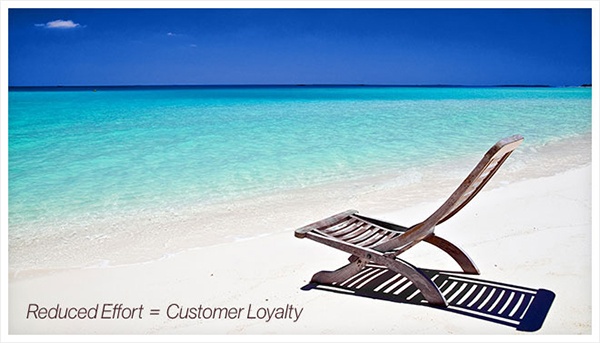
It's quite simple here: if a person needs to make a series of efforts to solve a problem, take on these obligations.
Do you need to take several steps to solve the problem? Provide them with a step-by-step video tutorial using Skype or Google Hangout Screen Sharing.
In most cases, buyers of goods and services need to perform many actions to get rid of their problem:
- Call another number
- to send a letter
- Fill out the lead form
By taking on at least part of such obligations, you will make their life easier and please them with a non-standard approach to service.
5. Why do people stop interacting with brands?
Believe me, the answer to this question may surprise you.
Here's a hint: it's not:
1. Price
2. Product flaws
3. Advertising competitors
Yes, each of these factors can actually lead to the loss of customers. But according to RightNow's 2010 Customer Experience Report, the number one reason a company leaves a company is poor customer service.
Statistics say that 82% of buyers have stopped cooperating with companies precisely because of poor service.
On the other hand, by providing your customers with quality service, you are also investing in the future, because on average 1 satisfied customer tells about his experience to 9 closest acquaintances.
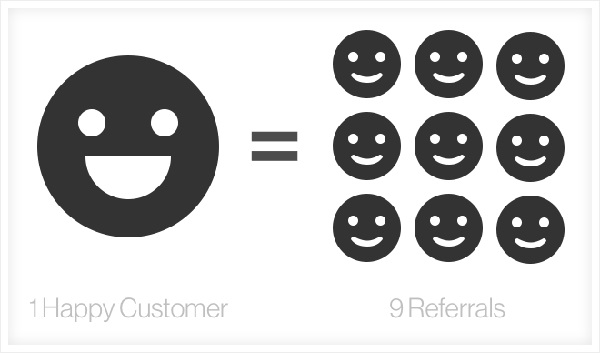
Satisfied customers will also allow you to significantly reduce your costs, and they are almost 14 times more likely to sell than new leads.
As you can see, bad service can really hurt your company, but by improving your service level, you can build loyal customer relationships, reduce customer churn, increase referrals, and grow your own business as quickly as possible.
High conversions for you!





